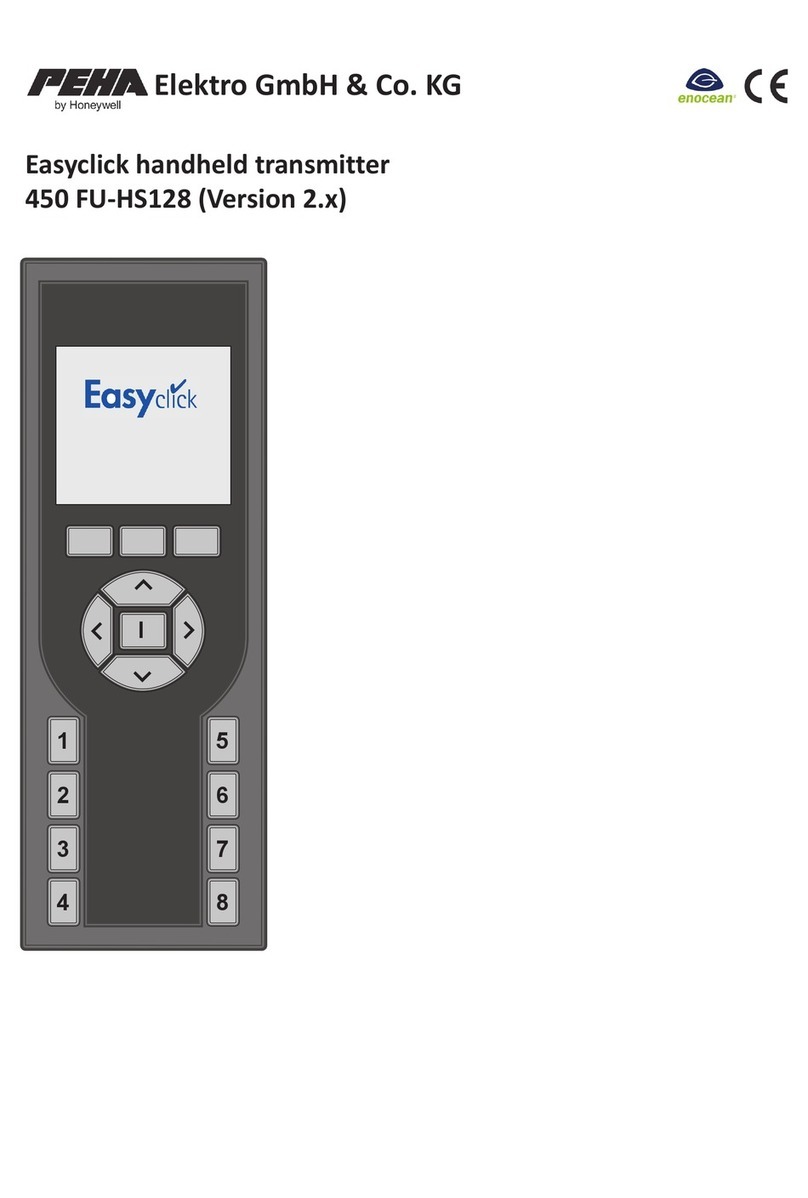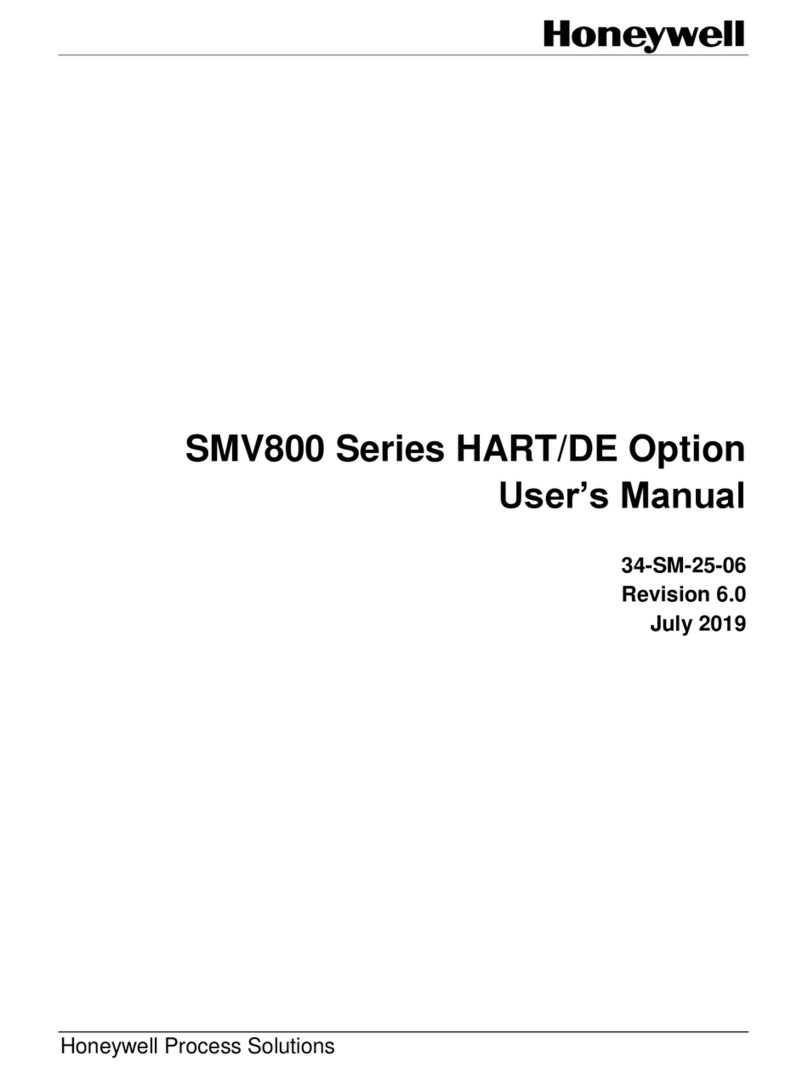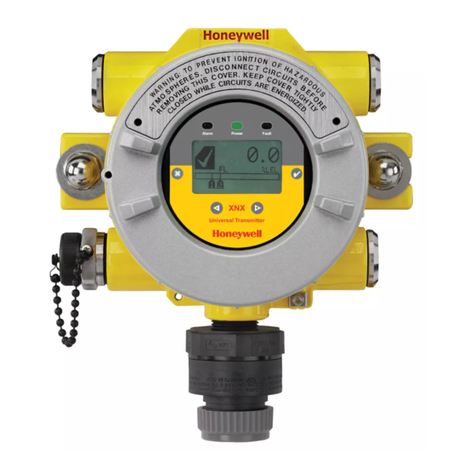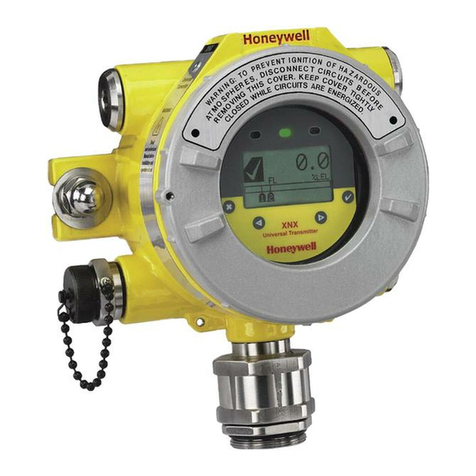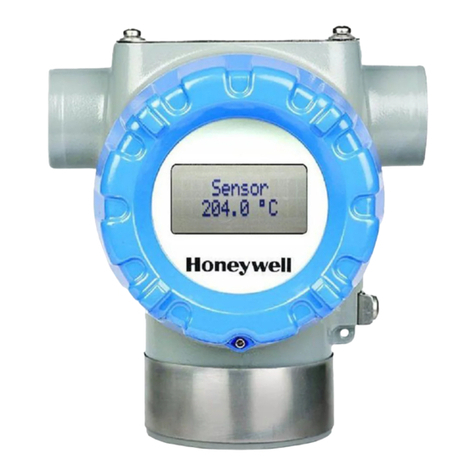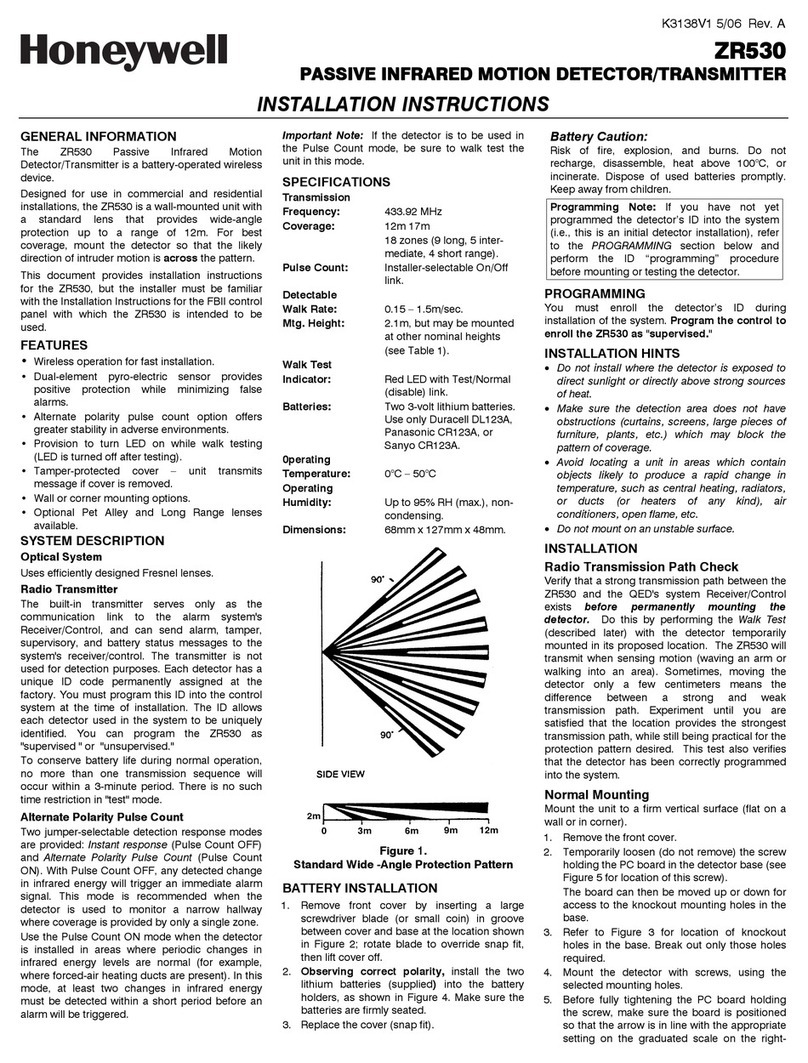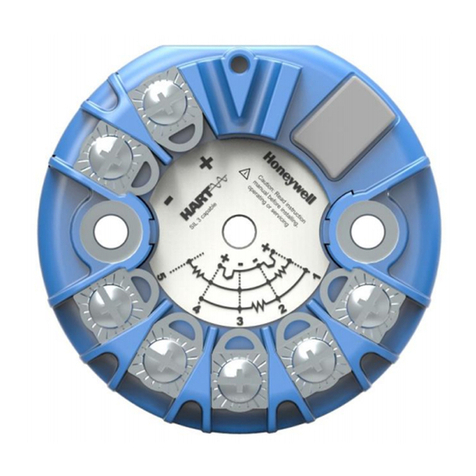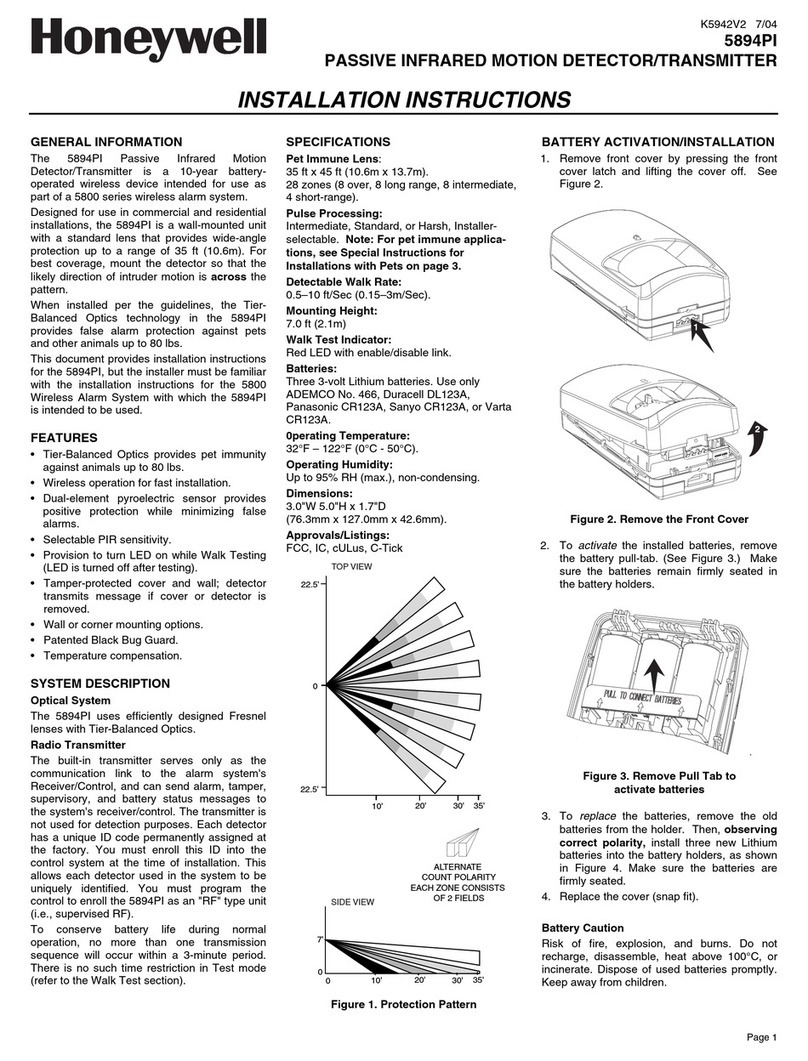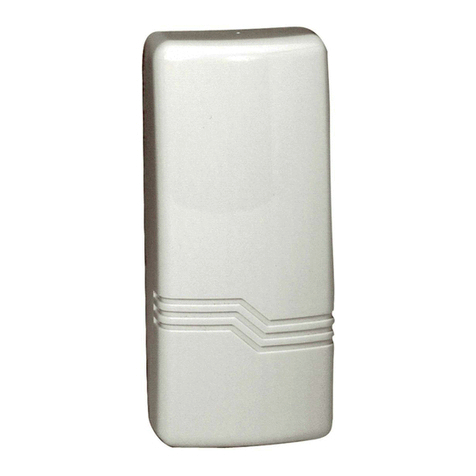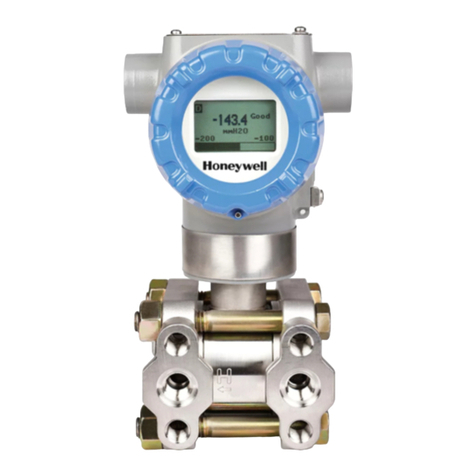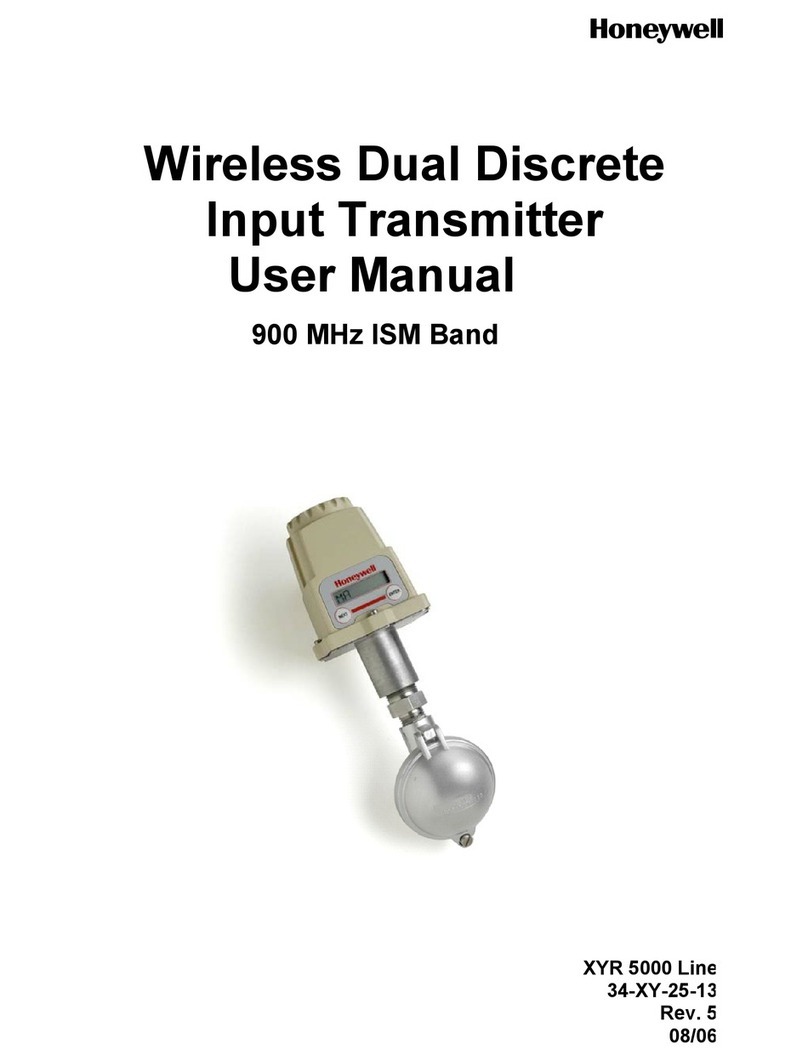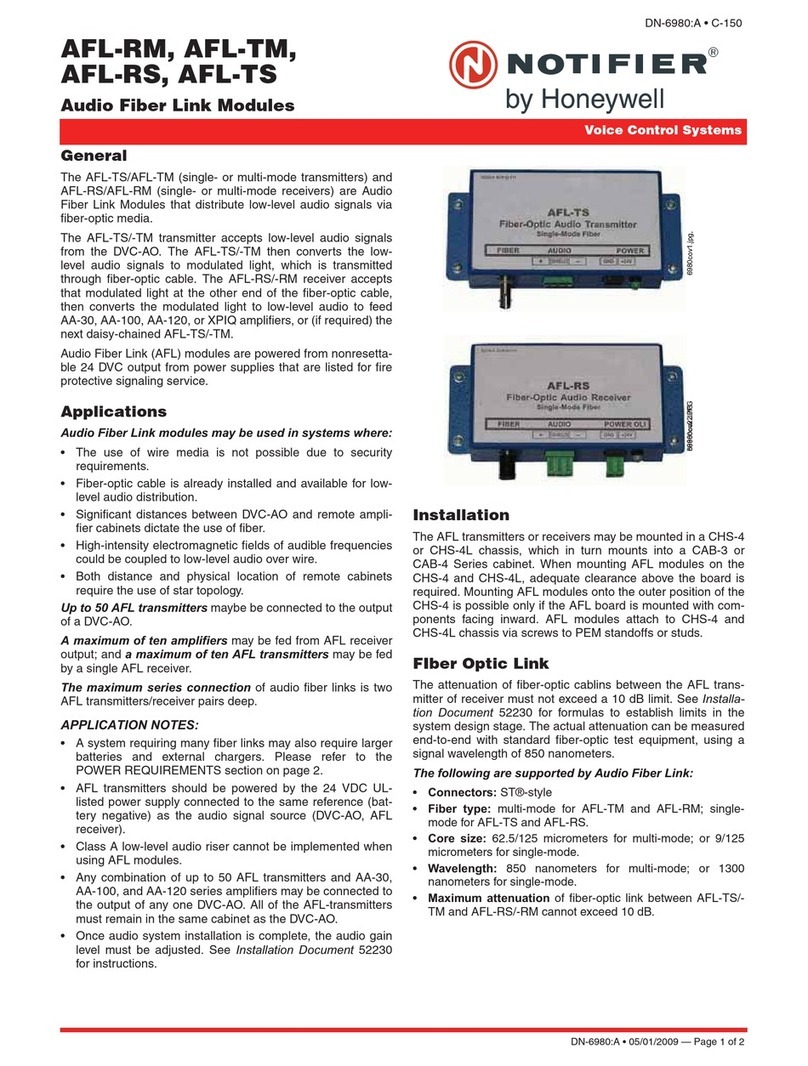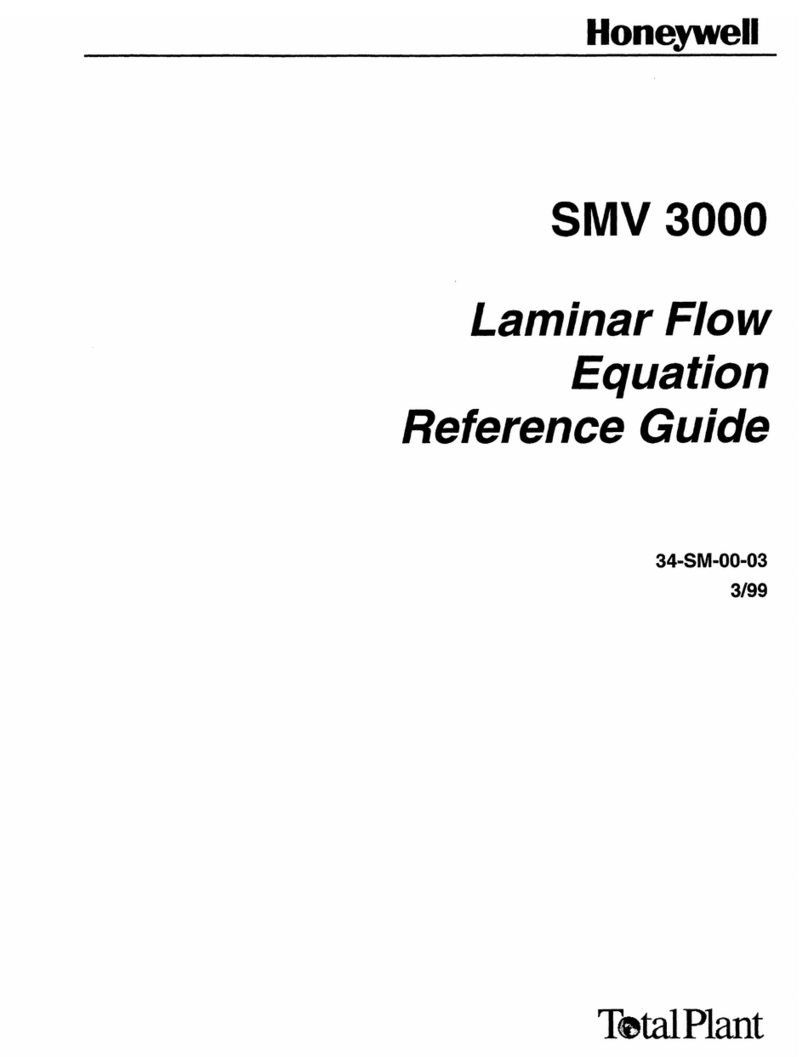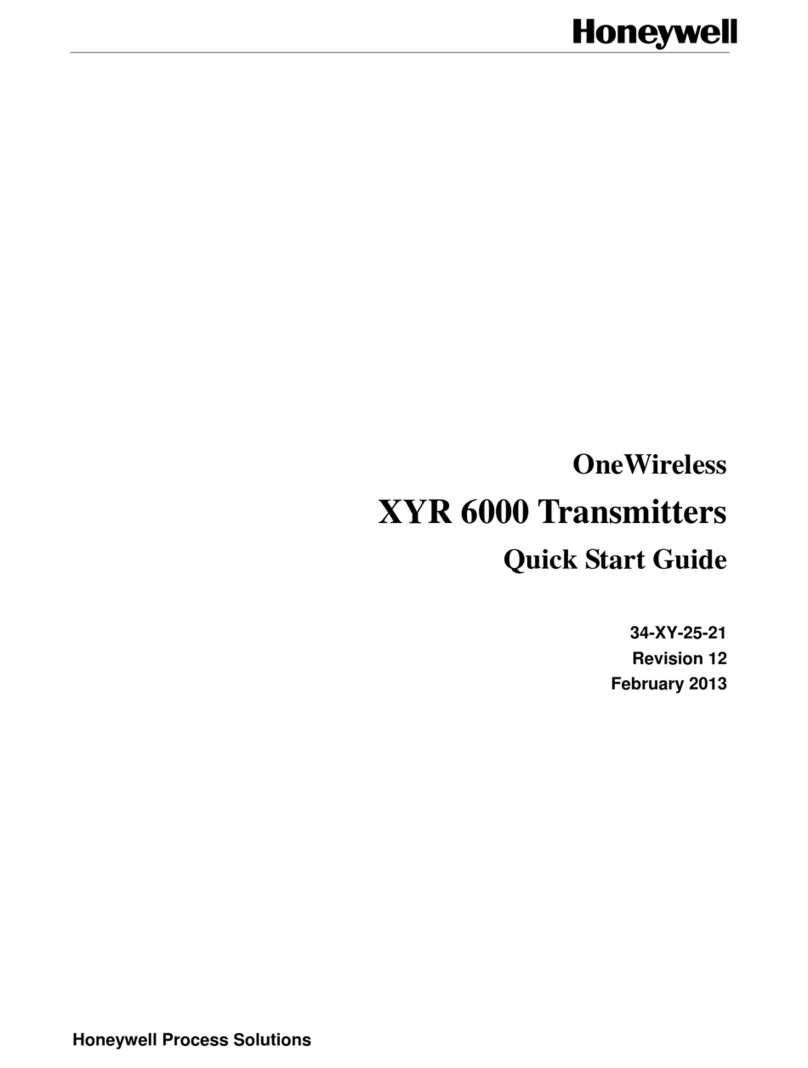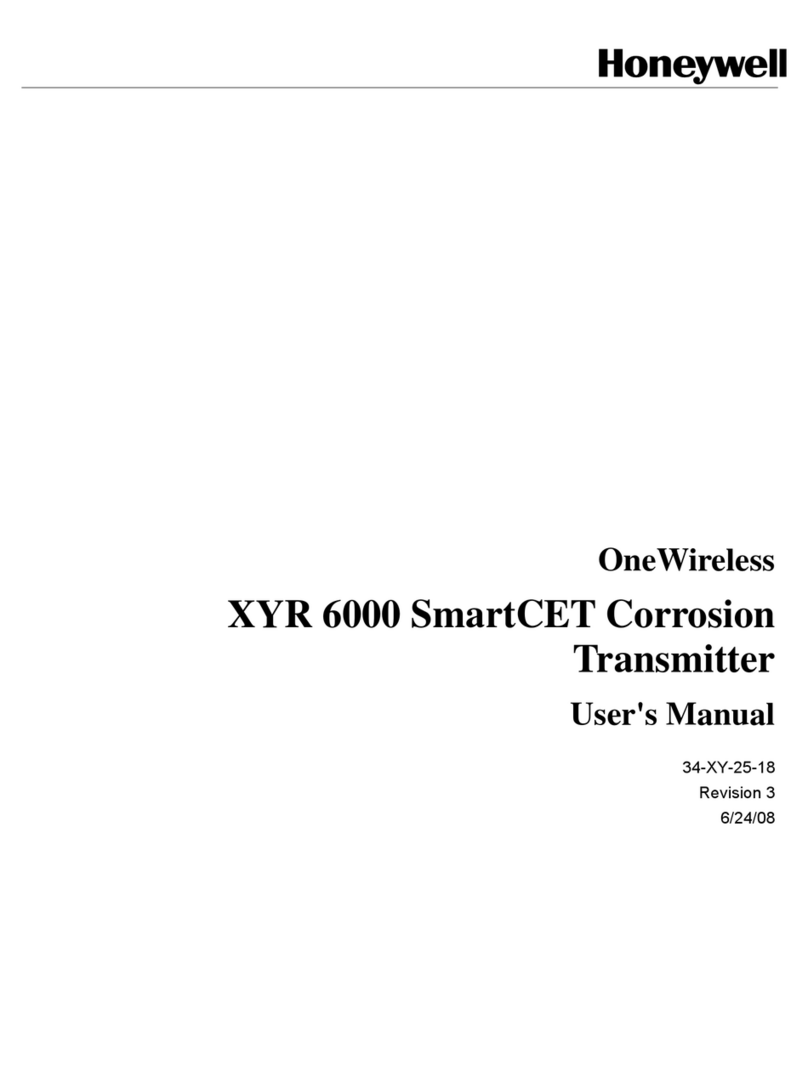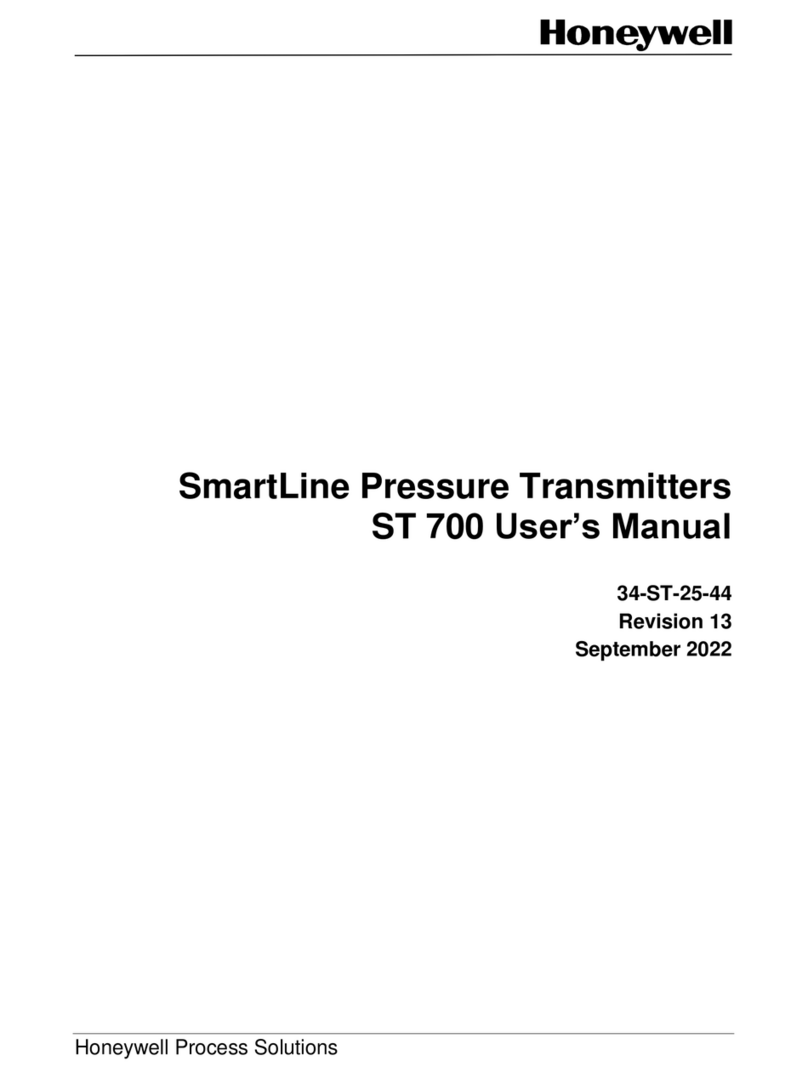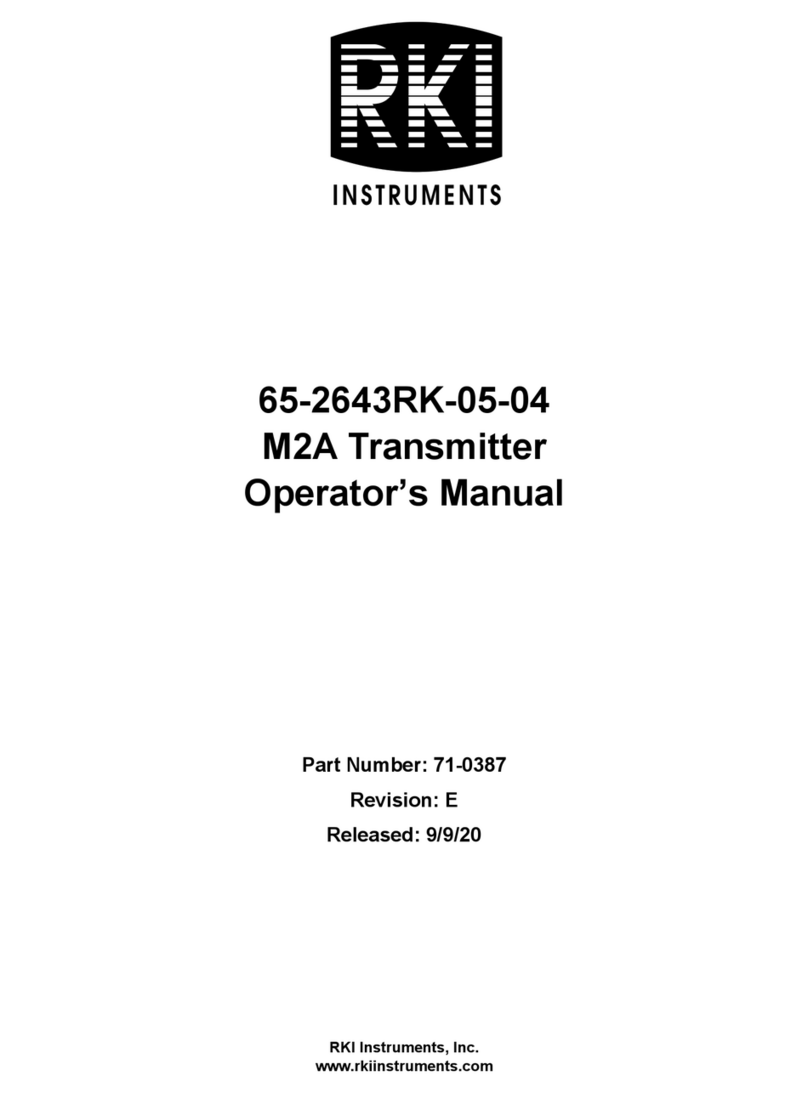
STT850/750 Quick Start Guide 4
Digital Output Wiring
Digital Output is available only on STT850 HART transmitters. The Digital Output
should not use the same power supply as used to support the 4-20mA transmitter
output. See Figure 13 and Figure 14.
For Intrinsically Safe (IS) applications, the 4-20mA and the Digital Output must use
separate IS Barriers.
Figure 13: Digital Output Connections for mA Load (HART only)
For best performance, it is recommended that:
•Digital Output wires should be in a separate shielded twisted pair cable, do
not use the same cable as used for the Loop or the Sensor wires
•If using the same power supply to operate both the 4-20mA Loop and the
Digital Output, then make the interconnections to the power supply terminals
directly at the power supply
Note: Intrinsically Safe Installations require the use of separate IS Barriers for the 4-20mA
output and for the Digital Output connections
Figure 14: Digital Output Connections for PLC Counting Input (HART only)
Explosion-Proof Conduit Seal
When installed as explosion proof in a Division 1 Hazardous Location, keep
covers tight while the Transmitter is energized. Disconnect power to the
Transmitter in the non-hazardous area prior to removing end caps for service.
When installed as non-incendive equipment in a Division 2 hazardous location,
disconnect power to the Transmitter in the non-hazardous area, or determine that the
location is non-hazardous before disconnecting or connecting the Transmitter wires.
Transmitters installed as explosion proof in Class I, Division 1, Hazardous (classified)
locations in accordance with ANSI/NFPA 70, the US National Electrical Code, require a
LISTED explosion proof seal to be installed in the conduit, within 18 inches (457.2 mm)
of the Transmitter when ¾ inch NPT conduit is used. Crouse-Hind’s type EYS/EYD or
EYSX/EYDX are examples of LISTED explosion proof seals that meet this requirement.
Transmitters installed as explosion proof with ½ inch NPT conduit, in Class I, Division
1, hazardous (classified) locations follow that of NFPA 70 for installation of explosion
proof seal.
See Figure 8, above, for parts locations. Loosen the end cap lock
using a 1.5 mm Allen wrench.
Remove the end cap cover from the terminal block end of the
Electronics Housing
Feed loop power leads through one end of the conduit entrances on
either side of the Electronics Housing. The Transmitter accepts up to
16 AWG wire.
Connect the positive loop power lead to the positive (+) terminal and
the negative loop power lead to the negative (-) terminal. Note that
the Transmitter is not polarity-sensitive.
Shielded, twisted-pair cable such as Belden 9318 or equivalent must
be used for all signal/power wiring.
Note: If solid core wire is used strip insulation 1/4 in (6 mm). Once
inserted under the square washer the stripped portion should be
contained under the square washer. If multi-stranded wire is used, a
ferrule is to be used and the stripped wire should be in the insulated
portion of the ferrule. The ferrule can also be used on the solid core
wire.
After wiring the Transmitter as outline in the next sections, torque the
screws to around 4 to 5(lb-in).
Max should not exceed 1.1 Nm (10 lb-in).
Don’t pull the wires after connecting to the screw terminals.
Feed input sensor wires through the 2nd conduit entrance and
connect wire per wiring diagrams
Replace the end cap, and secure it in place
Note: Terminal Screw#6 has thermal paste on the tip of screw intentionally to
improve the performance of the transmitter. Do not remove or clean the thermal
paste.
Configuration Guide
This transmitter comes with a standard factory configuration. Consult the nameplate for
basic information. Reconfiguration for your particular application can be accomplished
by following instructions in the Transmitter User’s manual. This can be found by
following the website URL or QR code on page 1 of this document.
Set the Jumpers For HART/DE
Setting Failsafe Direction and Write
Protect Jumpers
The SmartLine Temperature Transmitter
(DE or HART) provides two jumpers to
set the desired failsafe action and Write
Protect option. See Figure 15.
The top jumper on the electronics
module sets the Failsafe direction. The
default setting is up-scale failsafe.
Up Scale drives the loop to a value
greater than 21mA while Down Scale
drives the loop to a value less than
3.8mA.
You can change the failsafe direction by
moving the Failsafe Jumper (top jumper)
to the desired position (UP or DOWN).
If your transmitter is operating in DE
mode, the upscale failsafe action will
cause the transmitter to generate a
“+ infinity” digital signal, while a
downscale failsafe will cause the
transmitter to generate a “– infinity”
digital signal.
The bottom jumper sets the Write
Protect. The default setting is OFF (Un-
protected).
When set to the ON (Protected) position,
changed configuration parameters
cannot be written to the transmitter.
When set to the OFF (Un-protected)
position, changed configuration
parameters can be written to the
transmitter.
ATTENTION: Electrostatic
Discharge (ESD) hazards. Observe
precautions for handling
electrostatic sensitive devices
Turn OFF Transmitter power.
Loosen the end-cap lock and
unscrew the end cap from the
Electronics side of the Transmitter
housing.
If there is a Display module,
carefully depress the tabs on the
sides of the Display Module and
pull it off.
If necessary, move the interface
connector from the Communication
Module. Do not discard connector
Set the Failsafe Jumper (top
jumper) to the desired action (UP
or DOWN). And the Write Protect
jumper (Bottom jumper) to the
desired behavior (Protected or
Unprotected) See Figure 16 for
jumper positioning.
If applicable, re-install the Display
module as follows:
•Orient the display as desired.
•Install the Interface Connector in
the Display module such that it will
mate with the socket for the display
in the Communication module.
•Carefully line up the display and
snap it into place. Verify that the
two tabs on the sides of the display
latch.
Screw on the end cap and tighten
the end-cap lock. Turn ON
Transmitter power.
Figure 15: Jumper Location HART/DE
Failsafe = UP (High)
Write Protect = OFF (Not Protected)
Failsafe = DOWN (Low)
Write Protect = OFF (Not Protected)
Failsafe = UP (High)
Write Protect = ON (Protected)
Failsafe = DOWN (Low)
Write Protect = ON (Protected)
Figure 16: Jumper Settings

